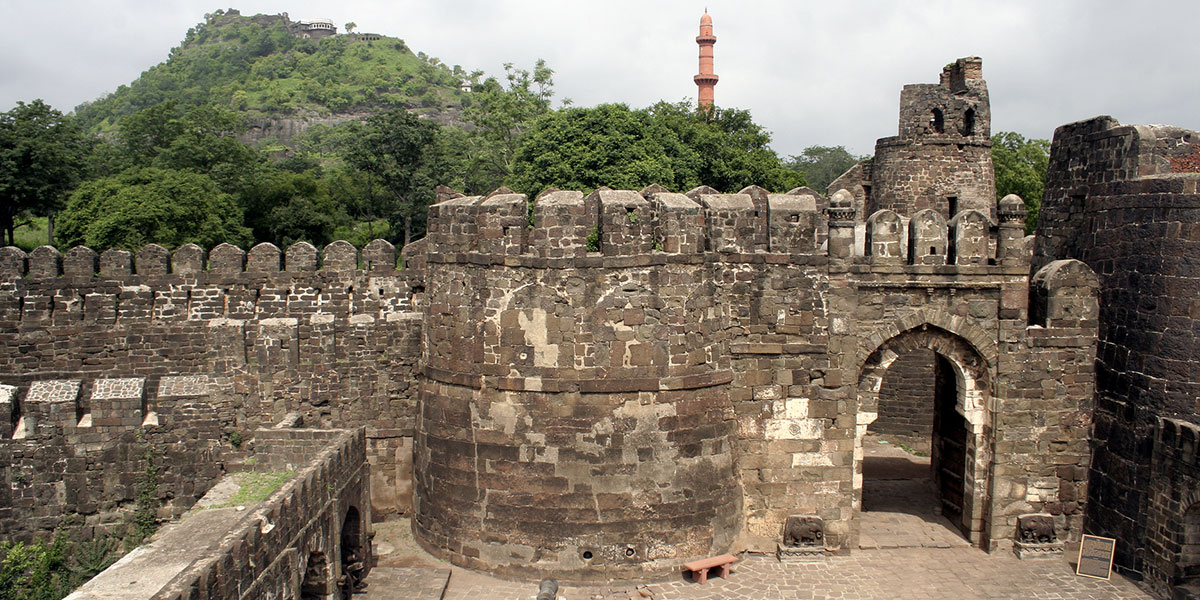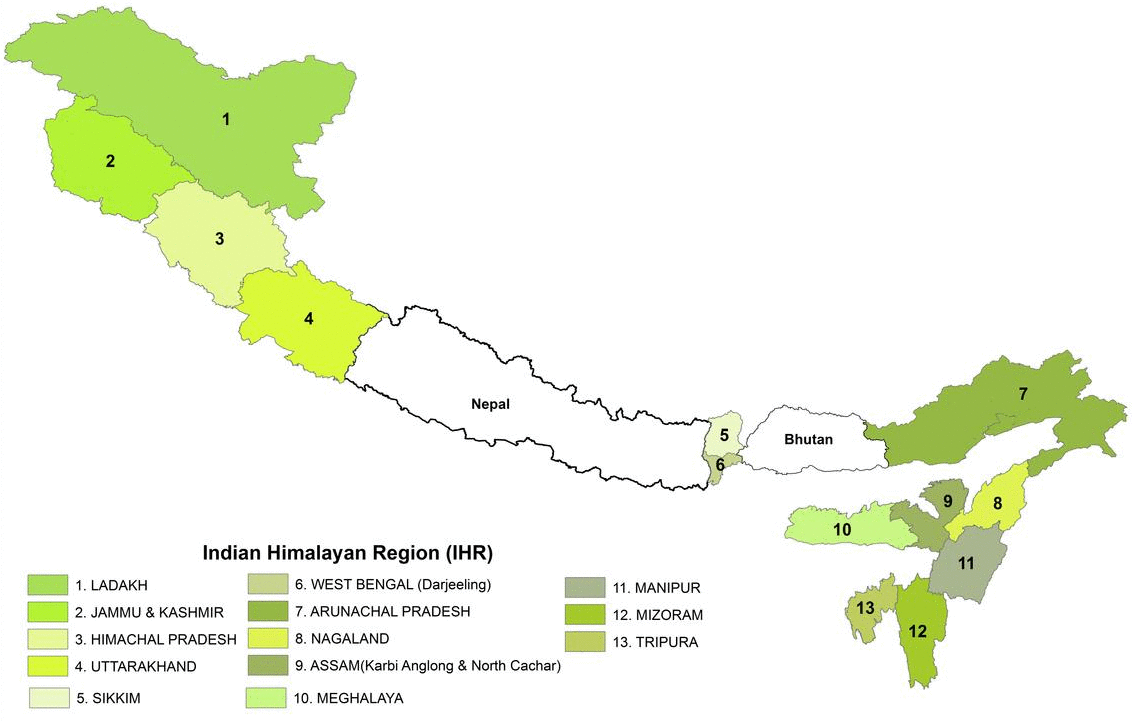Social Justice
Trends in Maternal Mortality
For Prelims: World Health Organization, Maternal Mortality Ratio, SDG Target 3.1, Health and Wellness Centers
For Mains: Maternal Health and Public Healthcare in India, Regional health disparities in India
Why in News?
A report by the United Nations Maternal Mortality Estimation Inter-Agency Group (MMEIG), titled “Trends in Maternal Mortality: 2000–2023”, has flagged India as the second-largest contributor to global maternal deaths after Nigeria.
Note: MMEIG is a group comprising the World Health Organization (WHO), the United Nations Children’s Fund (UNICEF), the United Nations Population Fund (UNFPA), the World Bank Group, United Nations Department of Economic and Social Affairs, Population Division.
What are the Trends in Maternal Mortality?
- India: In 2023, India recorded 19,000 maternal deaths, accounting for 7.2% of global maternal mortality, making it the 2nd largest contributor.
- India was followed by the Democratic Republic of Congo, also at 7.2%, and Pakistan at 4.1%.
- Despite this, India has made strong progress, with the Maternal Mortality Ratio (MMR) falling from 384 in 2000 to 103 in 2020, and further down to 80 in 2023, an 86% drop since 1990, surpassing the global average decline of 48%.
- Global MMR: From an estimated 443,000 deaths in 2000 to 260,000 in 2023, the global MMR declined from 328 to 197 per 100,000 live births, a 40% reduction.
- Sub-Saharan Africa accounted for 70% of maternal deaths with the highest regional MMR at 454.
- Oceania and Central & Southern Asia also reported moderate MMRs of 173 and 112, respectively.
- Only Australia and New Zealand had a very low MMR (~3), demonstrating stark inequalities.
- Slowing Progress: Annual rate of reduction (ARR) of global MMR dropped from 2.2% (2000–2023) to just 1.6% (2016–2023).
- Achieving Sustainable Development Goal (SDG) Target 3.1 (reducing global MMR to below 70 per lakh live births by 2030) requires an ARR of 14.8% from 2024 to 2030.
Maternal Death and MMR
- Maternal Death: Death of a woman during pregnancy or within 42 days of its end, due to pregnancy-related causes (excluding accidental/incidental causes).
- MMR: It is the number of maternal deaths per 100,000 live births in a given time period.
- It is a key indicator used to assess the quality of maternal healthcare and access to medical services during pregnancy and childbirth.
What are the Concerns Regarding India’s Maternal Mortality Progress?
- High Absolute Number of Maternal Deaths: Despite reducing its MMR to 80 per 100,000 live births, India still accounted for 7.2% of global maternal deaths, indicating persistent gaps in maternal healthcare access and quality.
- Unfair Comparisons in Global Reports: The Ministry of Health and Family Welfare flagged concerns over comparing India (145 crore) with Nigeria (23.26 crore) on maternal deaths, stating that using absolute numbers without adjusting for population size can misrepresent India’s relative progress.
- Slowing Pace of Progress: India’s MMR declined at 6.36% (2000–2020), higher than the global AAR of 2.07%, yet it is not fast enough to meet the SDG 3.1 target.
- While states like Kerala, Maharashtra, and Tamil Nadu have achieved an MMR below 70, others, such as Assam (195), Madhya Pradesh (173), Uttar Pradesh (167), and Bihar (118), lag behind the national average, reflecting regional disparities. in maternal healthcare.
- Challenges in Accessing Skilled Birth Care: Despite initiatives like the National Health Mission (NHM) and Janani Suraksha Yojana (JSY) , less institutional delivery in rural areas remains a concern due to lack of access to skilled birth attendants and emergency obstetric care.
- Complications such as postpartum hemorrhage, infections, and hypertensive disorders, which require timely medical intervention, remain leading causes of maternal deaths in these underserved areas.
- Non-Communicable Diseases (NCDs): India is also seeing an increasing number of indirect maternal deaths, especially due to NCDs like diabetes and hypertension .
- The growing burden of these diseases, coupled with inadequate prenatal care, is leading to higher maternal mortality .
How India Can Accelerate Progress Towards Reducing Maternal Mortality Rate?
- Strengthen Primary Health Care (PHC): Focus on Health and Wellness Centers (HWCs) to ensure women in rural and underserved areas access quality maternal care.
- Focus on Vulnerable Regions: Increase healthcare investments in high-risk states like Uttar Pradesh, Bihar, and Madhya Pradesh by leveraging mobile health units, telemedicine, and Accredited Social Health Activists can bridge access gaps.
- Additionally, targeted programs like Pradhan Mantri Surakshit Matritva Abhiyan (PMSMA) should be expanded to provide focused care for adolescent girls, tribal populations, and low-income groups.
- Policy Integration: Maternal health policies should be aligned with SDG 5 (Gender Equality) and SDG 10 (Reduced Inequalities) to ensure that maternal care is accessible to all women, especially marginalized groups.
- A multisectoral approach is essential to improve ma, educate communities, and address social determinants like poverty and gender-based violence.
- Enhance Data Systems: Promote accurate date collection under Civil Registration System (CRS) portal to ensure accurate reporting of maternal deaths, essential for effective policymaking and resource allocation.
- Leverage digital platforms like U-WIN under the Universal Immunization Programme for real-time tracking of maternal and child health indicators to enable targeted interventions.
|
Drishti Mains Question: Despite progress, India remains among the top contributors to global maternal mortality. Critically analyze the reasons and suggest measures to meet the SDG 3.1 target by 2030. |
UPSC Civil Services Examination, Previous Year Question (PYQ)
Mains
Q. In order to enhance the prospects of social development, sound and adequate health care policies are needed particularly in the fields of geriatric and maternal health care. Discuss. (2020)


Indian Economy
Climate-Driven Economic Losses in Asia- Pacific
For Prelims: UNESCAP, Gross domestic product, Asian Development Bank, Climate Risk Index, Green Climate Fund
For Mains: Climate change and economic vulnerabilities, India’s policy measures for climate adaptation and mitigation
Why in News?
A United Nations Economic and Social Commission for Asia and the Pacific (UNESCAP) report titled "Economic and Social Survey of Asia and the Pacific 2025" has highlighted that one-third of Asia-Pacific countries face economic losses of at least 6% of Gross domestic product (GDP) annually due to climate-related events, which include floods, heatwaves, droughts, and cyclones.
How Does Climate Change Threaten Macroeconomic Stability in Asia-Pacific?
- Average Annual Loss (AAL): ESCAP utilized the AAL, which represents the estimated annual economic loss from disasters based on risk assessments that account for hazard frequency, intensity, exposure, and vulnerability.
- Across the observed 30 Asia-Pacific countries, AAL averages 4.8% of GDP and nearly 11% in Cambodia and at least 7% in Fiji, Myanmar, and Pakistan.
- Vulnerability of Developing Economies: Among the 30 countries analyzed, 11 countries (Afghanistan, Cambodia, Iran, Kazakhstan, Laos, Mongolia, Myanmar, Nepal, Tajikistan, Uzbekistan, and Vietnam) are particularly vulnerable to climate risks from a macroeconomic standpoint.
- Rapid urbanization and weak infrastructure, especially in coastal areas, heighten climate risks, causing high losses.
- Despite contributing 60% to global economic growth in 2024, many Asia-Pacific nations remain poorly equipped to handle climate shocks.
- Sectoral Exposure: Agriculture may see up to a 14% reduction in rice yields by 2050, impacting food security and farmer incomes in countries like India.
- Countries reliant on coal and oil (like Indonesia, India, and China) face major economic disruptions due to the global transition to renewable energy, with job losses and revenue declines projected.
- Fishing stock depletion could reduce fish stocks by up to 30% in tropical regions by 2050.
What is UNESCAP?Click here to Read: UNESCAP |
What are the Major Climate Change Impacts on India’s Economy?
- India’s Economic Impact: According to the Asian Development Bank (ADB), India could face a 24.7% GDP loss by 2070 due to climate-induced economic impacts.
- Key Drivers of Economic Losses:
- Extreme Heat: India is already warming, unusual heat spells are expected to become more frequent and widespread.
- By 2030, India could account for 34 million of the projected 80 million global job losses due to heat stress-induced productivity declines (World Bank, 2022).
- Additionally, 4.5% of India’s GDP could be at risk due to lost labor hours from extreme heat and humidity conditions.
- Agricultural Decline: Rising heat and erratic rains are reducing rice and wheat yields. According to the World Bank, under 2°C warming by the 2050s, India may need to import more than twice the amount of food grain compared to a scenario without climate change.
- Rising Sea Levels: India’s 7,500 km coastline is increasingly vulnerable to rising sea levels, with 32% affected by erosion from 1990 to 2018.
- Coastal cities like Mumbai and Kolkata face heightened flood risks, and the Sundarbans may shrink by up to 80% by 2100.
- Extreme Weather Events: India ranks 6th among the top 10 countries most affected by extreme weather events from 1993 to 2023, according to Germanwatch’s Climate Risk Index.
- India witnessed over 400 extreme events, resulting in USD 180 billion in economic losses and at least 80,000 deaths during this period.
- Extreme Heat: India is already warming, unusual heat spells are expected to become more frequent and widespread.
What Strategies Can Asia-Pacific Adopt to Curb Climate-Driven Economic Losses?
- Embrace Circular Economy: Asia-Pacific Countries should promote circular economy systems where waste is reused in other sectors, cutting emissions and reducing resource use.
- India should focus on Zero Waste Cities by encouraging Waste-to-Wealth initiatives to minimize waste and resource consumption.
- Foster Green Innovation: Encourage climate-tech startups in areas like carbon capture, and renewable energy production and storage.
- India can foster climate innovation through the Atal Innovation Mission and Start-up India by supporting climate-tech ventures. Further funding from the Green Climate Fund (GCF) can help scale these green solutions.
- Climate-Resilient Infrastructure: Invest in flood-proof and heat-resistant infrastructure to protect urban areas from climate shocks.
- India can align the Smart Cities Mission with the National Action Plan on Climate Change (NAPCC) to integrate climate adaptation and mitigation.
- Developing climate-resilient Special Economic Zones (SEZs) with green infrastructure can attract low-carbon industries, inspired by models like Masdar City in the UAE.
- Green Taxonomy: India can develop a green taxonomy to channel investments into sustainable sectors and align it with the NAPCC to strengthen green financing.
- Global Climate Funds: Financial tools like the Loss and Damage Fund (LDF) support Asia-Pacific nations by funding climate resilience, better farming practices, and renewable energy transitions. Scaling up the LDF is crucial for impactful adaptation.
|
Drishti Mains Question: Discuss Climate vulnerabilities of developing countries in Asia-Pacific and suggest adaptive policy interventions. |
UPSC Civil Services Examination, Previous Year Question (PYQ)
Prelims
Q.1 In the context of India’s preparation for Climate-Smart Agriculture, consider the following statements: (2021)
- The ‘Climate-Smart Village’ approach in India is a part of a project led by the Climate Change, Agriculture and Food Security (CCAFS), an international research programme.
- The project of CCAFS is carried out under Consultative Group on International Agricultural Research (CGIAR) headquartered in France.
- The International Crops Research Institute for the Semi-Arid Tropics (ICRISAT) in India is one of the CGIAR’s research centres.
Which of the statements given above are correct?
(a) 1 and 2 only
(b) 2 and 3 only
(c) 1 and 3 only
(d) 1, 2 and 3
Ans: (d)
Q.2 Which of the following best describes/describe the aim of ‘Green India Mission’ of the Government of India? (2016)
- Incorporating environmental benefits and costs into the Union and State Budgets thereby implementing the ‘green accounting’.
- Launching the second green revolution to enhance agricultural output so as to ensure food security to one and all in the future.
- Restoring and enhancing forest cover and responding to climate change by a combination of adaptation and mitigation measures.
Select the correct answer using the code given below.
(a) 1 only
(b) 2 and 3 only
(c) 3 only
(d) 1, 2 and 3
Ans: (c)
Q.3 With reference to ‘Global Climate Change Alliance’, which of the following statements is/are correct? (2017)
- It is an initiative of the European Union.
- It provides technical and financial support to targeted developing countries to integrate climate change into their development policies and budgets.
- It is coordinated by World Resources Institute (WRI) and World Business Council for Sustainable Development (WBCSD).
Select the correct answer using the code given below:
(a) 1 and 2 only
(b) 3 only
(c) 2 and 3 only
(d) 1, 2 and 3
Ans: (a)
Mains
Q.1 Describe the major outcomes of the 26th session of the Conference of the Parties (COP) to the United Nations Framework Convention on Climate Change (UNFCCC). What are the commitments made by India in this conference? (2021)
Q.2 ‘Climate Change’ is a global problem. How will India be affected by climate change? How Himalayan and coastal states of India be affected by climate change? (2017)

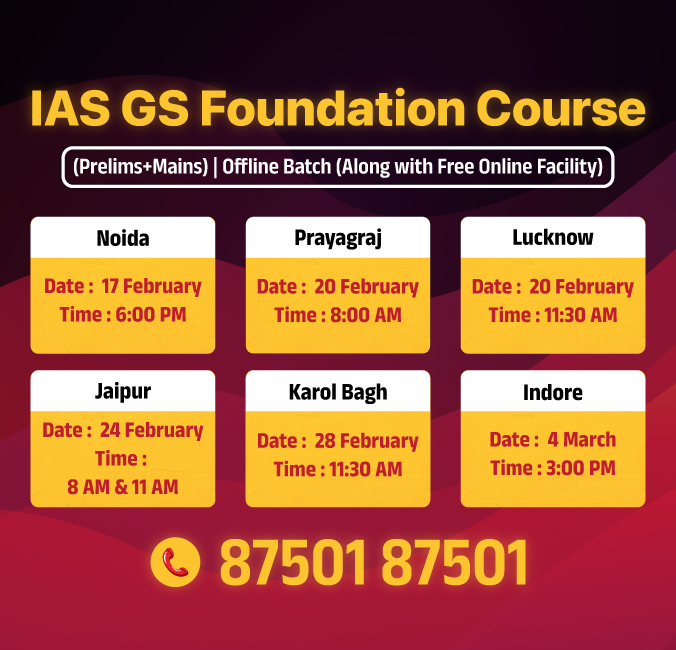
Facts for UPSC Mains
Mahavir Jayanti
Why in News?
Prime Minister inaugurated Navkar Mahamantra Divas to mark Mahavir Jayanti (10th April 2025), emphasizing that Lord Mahavir’s teachings of non-violence, truth, and compassion offer contemporary solutions to global challenges and align with the vision of ‘Viksit Bharat’.
What is the Historical Background of Mahavir Jayanti?
- About: Mahavir Jayanti, also known as Mahaveer Janma Kalyanak, is one of the significant religious festivals in Jainism.
- It celebrates the birth of Vardhamana Mahavira, the 24th and last Tirthankara of Jain tradition (succeeded the 23rd Tirthankara Parshvanatha), who is considered a great spiritual teacher and reformer.
- Mahavir Jayanti is celebrated on the 13th day of Chaitra month in the Hindu calendar, the date varies annually.
- Vardhamana Mahavira:
What is the Contemporary Relevance of Teachings of Lord Mahavira?
- Ahimsa (Nonviolence): Lord Mahavira’s teaching of Ahimsa advocates ending all forms of violence, including physical, verbal, and psychological, and promotes compassion towards all living beings.
- In today’s world, plagued by armed conflicts, terrorism, and nuclear threats, this principle calls for peaceful resolutions and compassionate dialogue.
- This principle is also echoed in the UN Charter, Gandhian ethics, and Sustainable Development Goal 16 (Peace, Justice, and Strong Institutions), highlighting its global relevance and contemporary importance..
- Aparigraha (Non-possessiveness): Mahavira’s principle of detachment from material possessions encourages a sustainable lifestyle, fostering minimalism and curbing greed, values that align with Mission LiFE (Lifestyle for Environment) and and SDG 12 (Responsible Consumption and Production) to address environmental degradation and climate change
- Anekantavada: It teaches that truth has many dimensions, promoting respect for diverse perspectives and helping reduce religious intolerance, racial discrimination, and societal divisions.
- It resonates with constitutional morality, freedom of thought and expression (Article 19), and secularism (Article 25) in the Indian Constitution.
- Satya (Truth) and Asteya (Non-stealing): Mahavira’s principles of honesty and respecting others' rights promote transparency and integrity in today’s world, combating corruption and unethical practices.
- These teachings guide the creation of ethical businesses that prioritize social responsibility.
- In business, Asteya promotes ethical sourcing, fair wages, and sustainability, aligning with fair trade principles and ESG (Environmental, Social, and Governance) frameworks to combat exploitation in the global economy.
- Brahmacharya (Celibacy/ Self-restraint): Though interpreted in modern times as self-discipline, it helps address issues like substance addiction, mental health, and emotional instability.
What are the Key Facts About Jainism?Click here to Read: Jainism |
|
Drishti Mains Question: Discuss the Contemporary Relevance of Teachings of Lord Mahavira. |
UPSC Civil Services Examination, Previous Year Questions (PYQs)
Prelims:
Q. With reference to the religious practices in India, the “Sthanakvasi” sect belongs to (2018)
(a) Buddhism
(b) Jainism
(c) Vaishnavism
(d) Shaivism
Ans: (b)
Q. With reference to the religious history of India, consider the following statements: (2017)
- Sautrantika and Sammitiya were the sects of Jainism.
- Sarvastivadin held that the constituents of phenomena were not wholly momentary, but existed forever in a latent form.
Which of the statements given above is/are correct?
(a) 1 only
(b) 2 only
(c) Both 1 and 2
(d) Neither 1 nor 2
Ans: (b)
Q. With reference to the history of ancient India, which of the following was/were common to both Buddhism and Jainism? (2012)
- Avoidance of extremities of penance and enjoyment
- Indifference to the authority of the Vedas
- Denial of the efficacy of rituals
Select the correct answer using the codes given below:
(a) 1 only
(b) 2 and 3 only
(c) 1 and 3 only
(d) 1, 2 and 3
Ans: (b)
Q. Anekantavada is a core theory and philosophy of which one of the following? (2009)
(a) Buddhism
(b) Jainism
(c) Sikhism
(d) Vaishnavism
Ans: (b)


Important Facts For Prelims
Ottawa Landmine Convention
Why in News?
NATO members: Poland, Finland, and the three Baltic states (Estonia, Latvia, Lithuania) are withdrawing from the 1997 Ottawa Convention, citing increased security threats from Russia amid the ongoing Russia-Ukraine war.
- They fear a ceasefire may let Russia re-arm and endanger their security.
What is Ottawa Convention 1997?
- About:
- It is an international agreement that prohibits the use, production, stockpiling, and transfer of anti-personnel landmines.
- Landmines are concealed explosive devices that are activated by proximity or pressure.
- Anti-personnel mines are specifically designed to cause harm or injury to individuals, including soldiers.
- It obligates signatories to destroy stockpiles within 4 years, clear mined areas, and assist victims.
- It is an international agreement that prohibits the use, production, stockpiling, and transfer of anti-personnel landmines.
- Objective: It aims to mitigate civilian harm caused by landmines, which remain lethal long after conflicts end.
- Adoption: Finalized at the Diplomatic Conference in Oslo on 18th September 1997 and entered into force on 1st March 1999.
- Scope: Bans anti-personnel landmines but does not apply to anti-vehicle mines (designed to damage or destroy vehicles).
- Membership: 164 States countries.
- Major powers like the US, Russia, and India are not parties.
2008 Convention on Cluster Munitions
- The Convention prohibits all use, production, transfer and stockpiling of cluster munitions.
- Cluster munitions are weapons that release many smaller explosives (bomblets) over a large area, often harming civilians and creating lasting humanitarian risks.
- It has 112 state parties and 12 signatories. Recently, Lithuania has withdrawn from the 2008 Convention on Cluster Munitions, which bans weapons that spread smaller bombs over a wide area.
- India, along with the US, Russia, China, Ukraine, and Israel, has refrained from signing the treaty, primarily due to military and strategic considerations.
UPSC Civil Services Examination Previous Year’s Questions (PYQs)
Prelims
Q. Which one of the following is used as an explosive? (2009)
(a) Phosphorus trichloride
(b) Mercuric oxide
(c) Graphite
(d) Nitroglycerine
Ans: (d)


Rapid Fire
Daulatabad Fort
A fire at Daulatabad Fort in Maharashtra’s Chhatrapati Sambhajinagar district has prompted the Archaeological Survey of India (ASI) to initiate damage assessment and plan disaster management.
- Significance: Originally called Devgiri (Hill of Gods), it was renamed Daulatabad by Muhammad bin Tughlaq when he shifted his capital there in the 14th century.
- It served as the capital of several dynasties including Yadavas, Tughlaqs, Bahmanis, Nizam Shahis, Mughals, and briefly the Marathas before the Nizams of Hyderabad.
- It is a UNESCO-nominated heritage site, known for its historical, architectural, and ecological importance.
- Architectural Brilliance: Daulatabad Fort is fortified in three layers Ambarkot, Mahakot, and Kalakot with moats, bastions, and iron-spiked gates.
- It features a deadly tunnel called Andheri, used to trap and attack invaders.
- Monuments and Structures Within:
- Chand Minar (1435 CE): Indo-Islamic style victory tower modeled after Qutub Minar.
- Bharat Mata Mandir, located within the fort, was previously the Jama Masjid during Qutub-ud-din Mubarak's reign (1318 CE).
- Chini Mahal, a lavish palace turned prison by Aurangzeb.
- Artillery and Cannons: Fort was equipped with ~288 cannons, a notable one is Aurangzeb’s Mendha also called Qila Shikan (fort-breaker), symbolized military power.
| Read more: Gingee Fort Nominated for UNESCO World Heritage Site |


Rapid Fire
India's First-Ever Climate Change Station
India has inaugurated the Himalayan High Altitude Atmospheric and Climate Research Centre at Nathatop, Jammu & Kashmir, marking a major milestone in global climate science.
Himalayan High Altitude Atmospheric and Climate Research Centre
- Strategic Location: The center is located at an altitude of 2,250 meters above sea level in Nathatop, chosen for its clean air and minimal pollution.
- Which makes the center ideal for high-accuracy atmospheric and climate measurements.
- Research Domain: The centre will facilitate cutting-edge studies on cloud formation, aerosol interactions, and weather patterns.
- ICE-CRUNCH: The inauguration marked the launch of the Indo-Swiss Joint Research Project, ICE-CRUNCH (Ice Nucleating Particles and Cloud Condensation Nuclei Properties in the North-Western Himalayas).
- It focuses on understanding Ice-Nucleating Particles (INPs) and cloud condensation nuclei (tiny suspended particles, either solid/liquid), pivotal to climate modelling and precipitation patterns in the region.
- Significance: It will enhance India's leadership in climate science and support efforts to meet global climate targets, including the country’s commitment to net-zero emissions (by 2070).
| Read More: Indian Himalayan Region (IHR), Sustaining the Himalayan Ecosystem |


Rapid Fire
Naval Exercise INDRA-2025
The 14th edition of the bilateral naval exercise INDRA-2025 between India and Russia was conducted in Chennai.
INDRA 2025
- It was held in 2 phases:
- Harbour Phase in Chennai, featuring expert exchanges, ship visits and sports.
- Sea Phase in the Bay of Bengal, with advanced drills like tactical manoeuvres, anti-air operations and helicopter landings.
- Russian ships such as Pechanga, Rezkiy, Aldar Tsydenzhapov, and Indian warships- Rana, Kuthar, and the P-8I aircraft participated in the exercise.
Exercise INDRA
- It is a bilateral naval exercise conducted regularly since 2003.
- It aims to counter maritime threats, promote global peace and stability, and strengthen joint operations.
- It reaffirms India-Russia defence ties, enhances collective maritime security, and underscores India’s commitment to a rules-based maritime order.
Other Joint Naval Exercises of India
|
Exercise |
Countries |
|
MALABAR |
India, USA, Japan, Australia |
|
Varuna |
India, France |
|
La Perouse |
India, Australia, United States, France, Japan, and United Kingdom |
|
Sea Dragon |
India, USA, Japan, Canada, South Korea |
|
Konkan |
India, UK |
|
AIME & IMDEX |
India, ASEAN Countries |
|
Bright Star |
India, 34 Countries |
|
SALVEX |
India, USA |
|
SLINEX |
India, Sri Lanka |
|
Samudra Shakti |
India, Indonesia |
|
Al-Mohed Al-Hindi |
India, Saudi Arabia |
|
India - France - UAE trilateral exercise |
India, France, UAE |
|
India - France - UAE trilateral PASSEX |
India, France, UAE |
|
KOMODO |
India, Multiple (36 Countries) |
|
AUSINDEX |
India, Australia |
|
SIMBEX |
India, Singapore |
| Read More: Major Military Exercises of India |


Rapid Fire
150th Assembly of the Inter-Parliamentary Union
Lok Sabha Speaker along with the Indian Parliamentary Delegation, participated in the 150th Assembly of the Inter-Parliamentary Union (IPU) held in Tashkent, Uzbekistan.
Inter-Parliamentary Union (IPU)
- Inter-Parliamentary Union, founded in 1889, is the global organization of national parliaments promoting peace through parliamentary diplomacy.
- Headquartered in Geneva, it has 182 Member Parliaments and 15 Associate Members (2025).
- Funded primarily by member contributions, its slogan is: “For democracy. For everyone.”
- Objective: Its objective is to promote democratic governance, dialogue, and capacity-building by empowering parliaments to address public aspirations.
- IPU Assembly: It is its principal statutory body, meeting twice a year to discuss and adopt resolutions on democracy, human rights, peace, and sustainable development.
- Key Highlight of 150th IPU: India emphasized inclusive democracy through the Nari Shakti Vandan Act, promoted values like ‘Vasudhaiva Kutumbakam’, proposed regular parliamentary exchanges with Uzbekistan, Israel, and Kazakhstan, and paid tribute to former PM Lal Bahadur Shastri in Tashkent.
| Read More: India-Central Asia Summit, India and Uzbekistan Signed BIT |



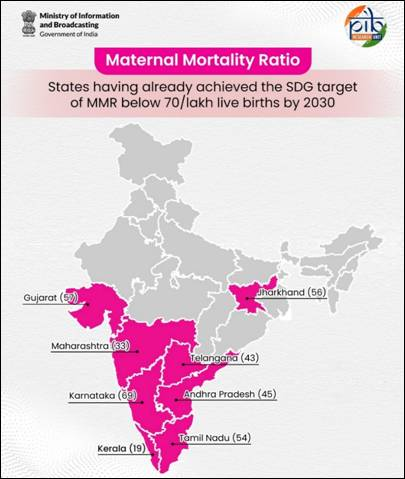
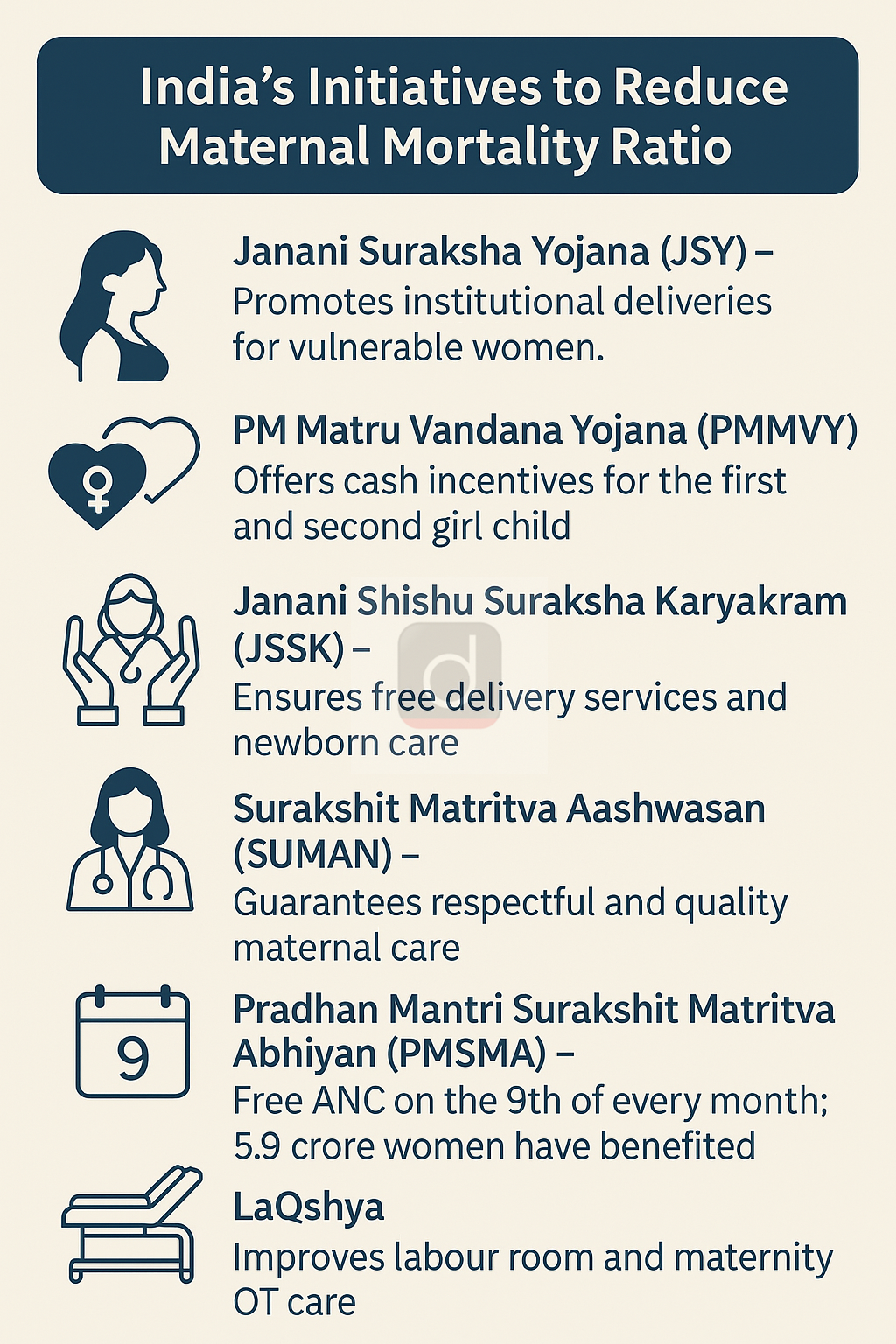

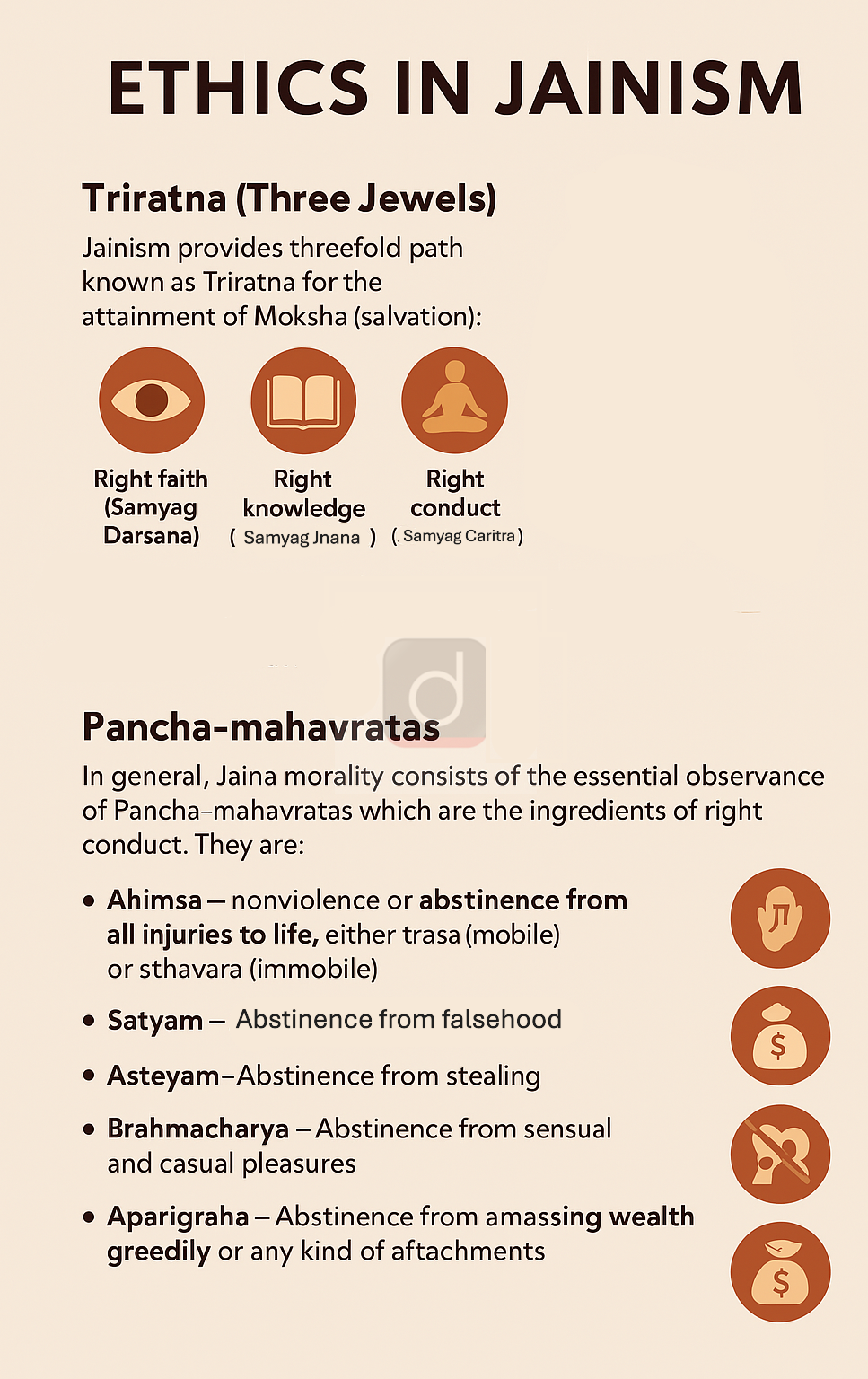
 as of 2025.png)
